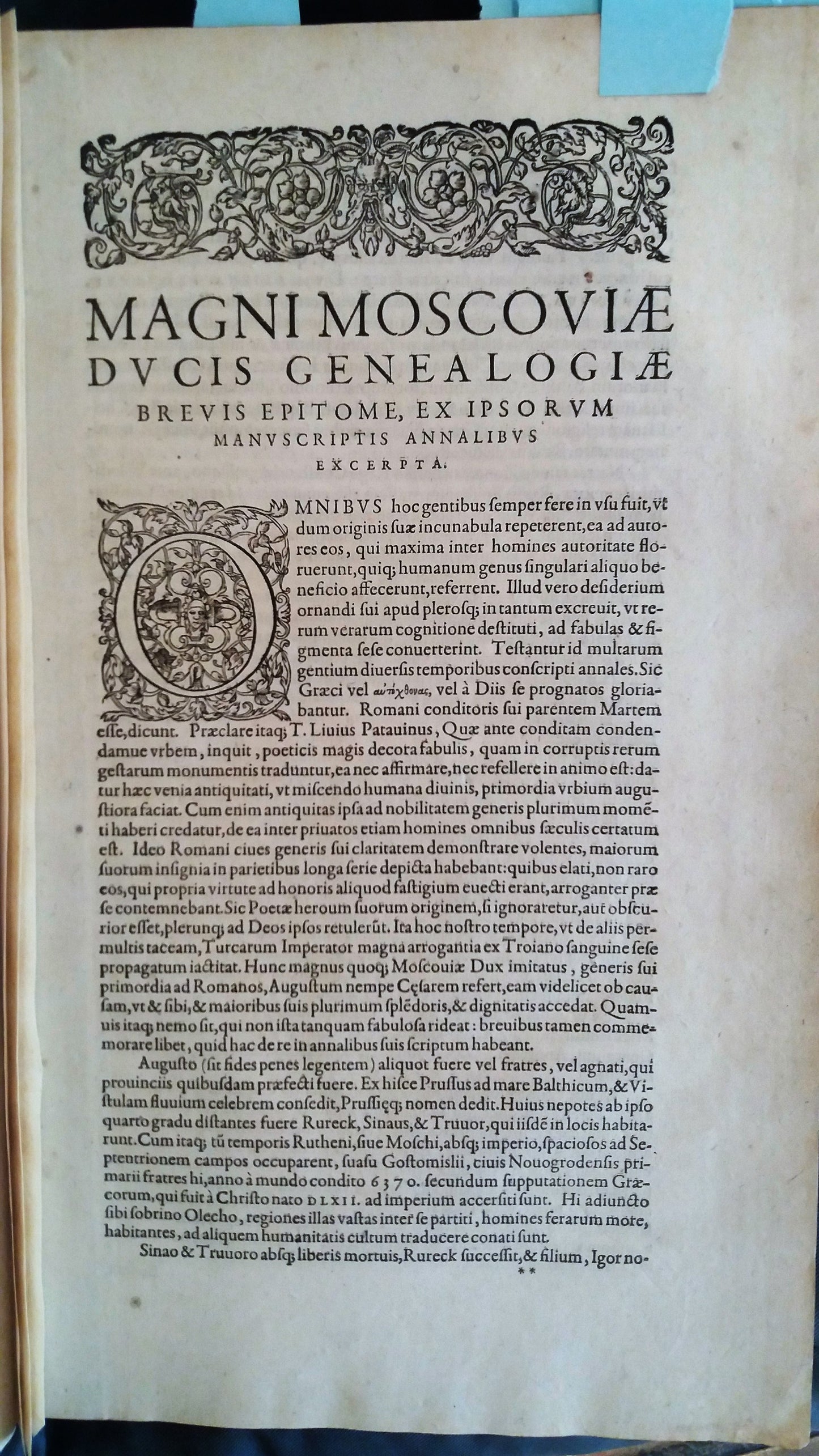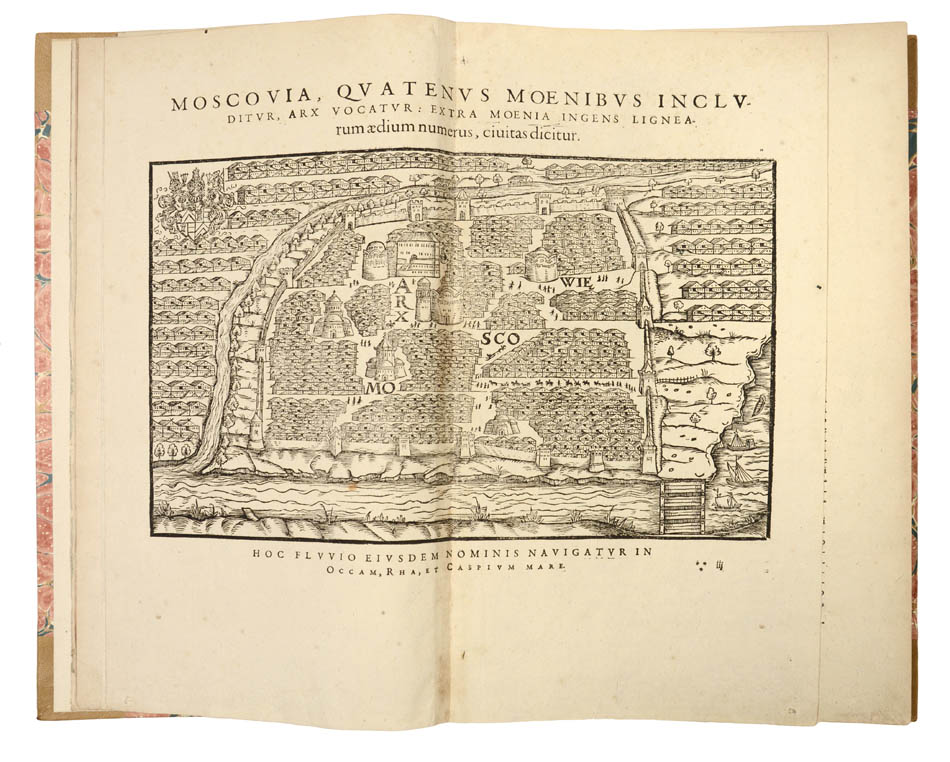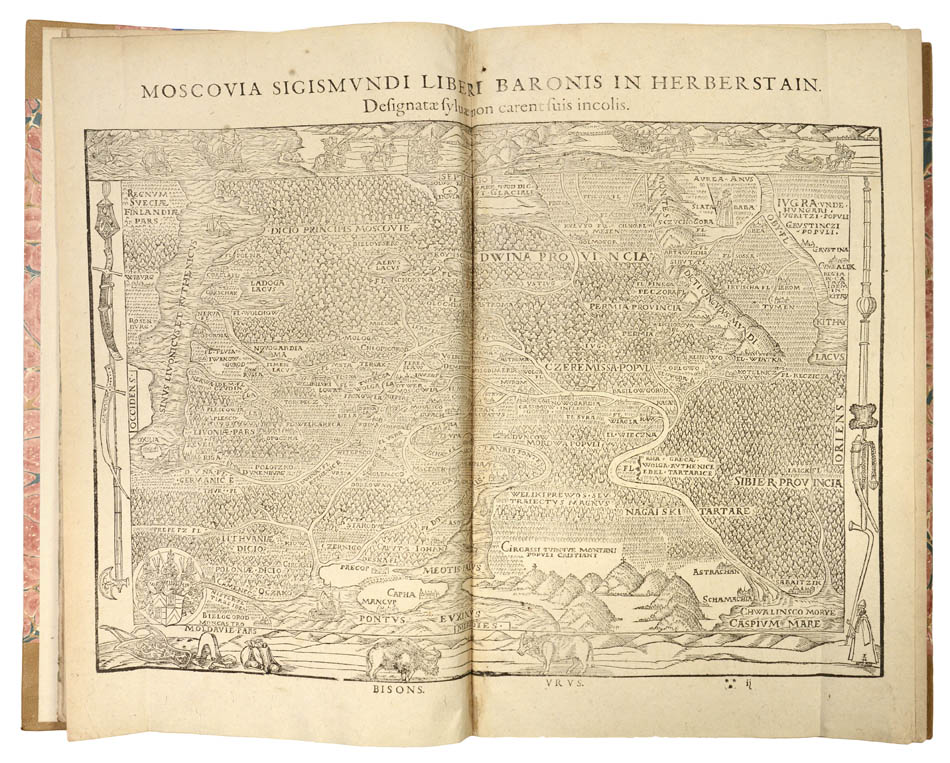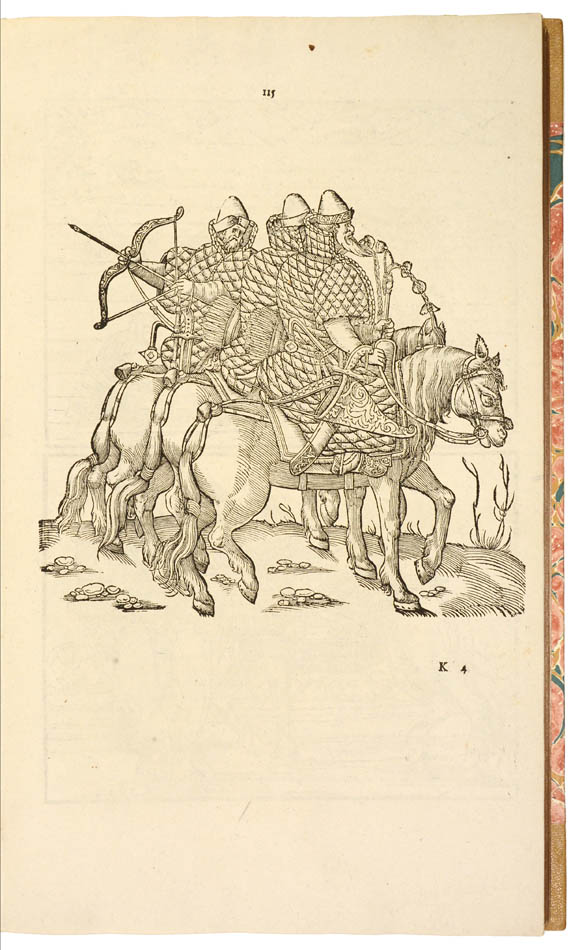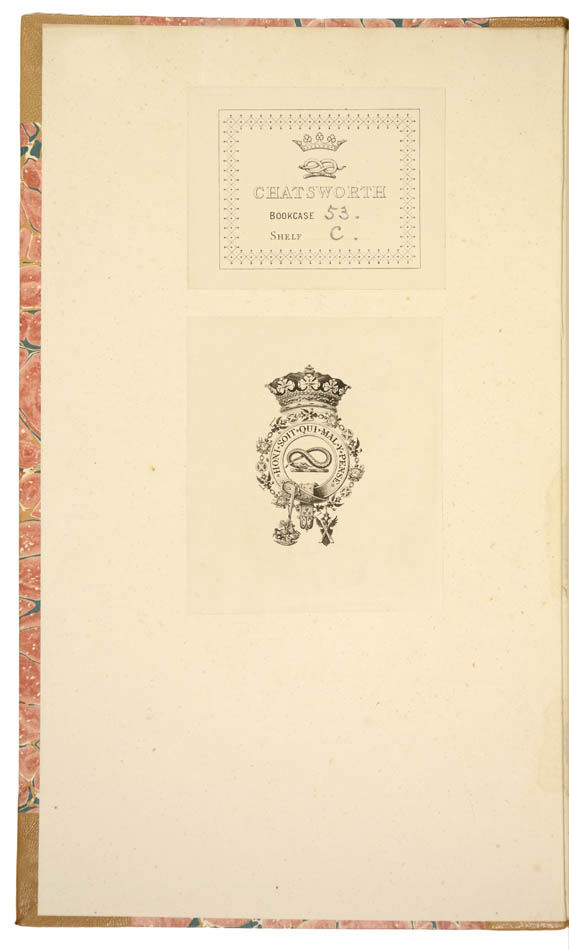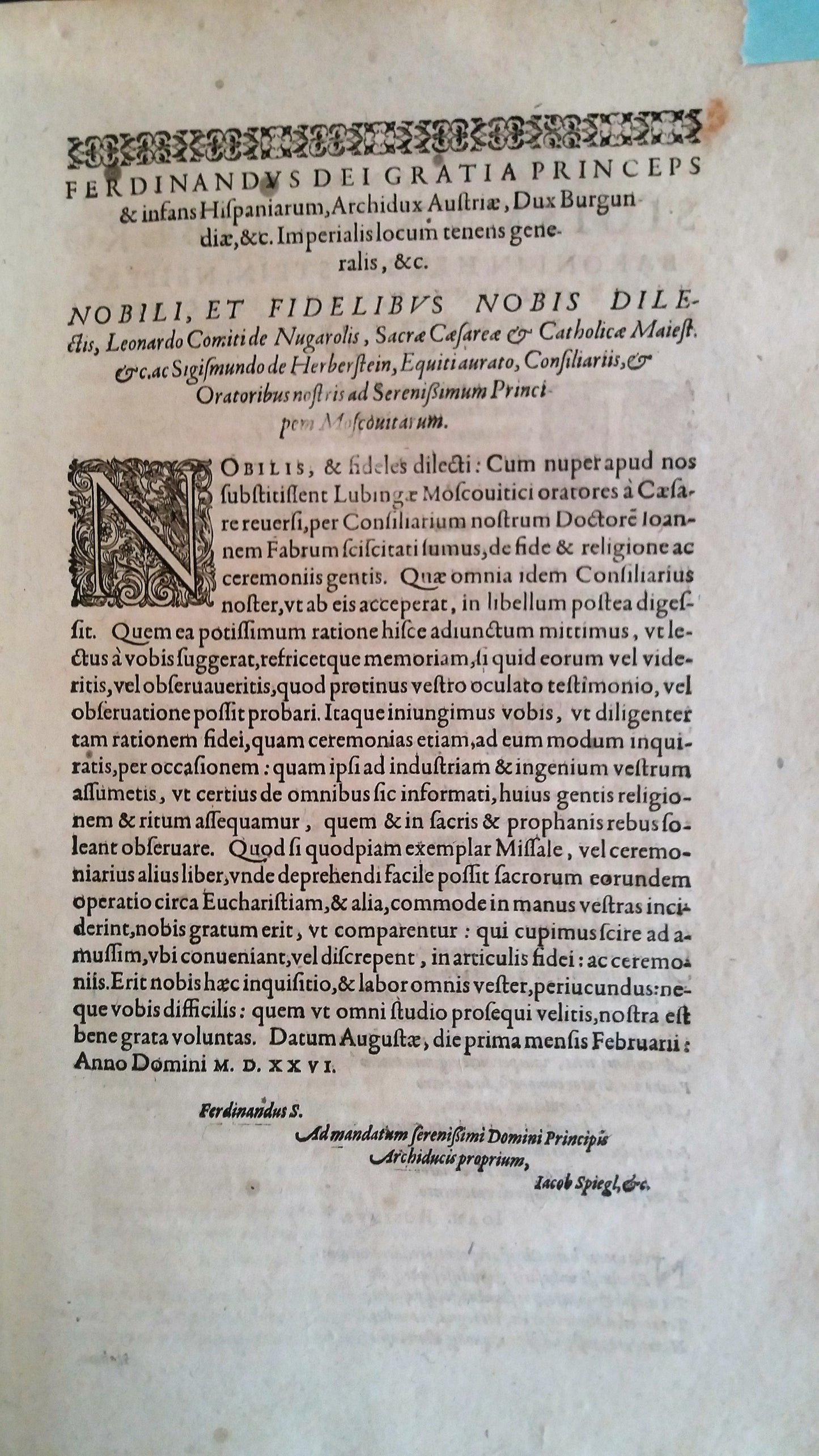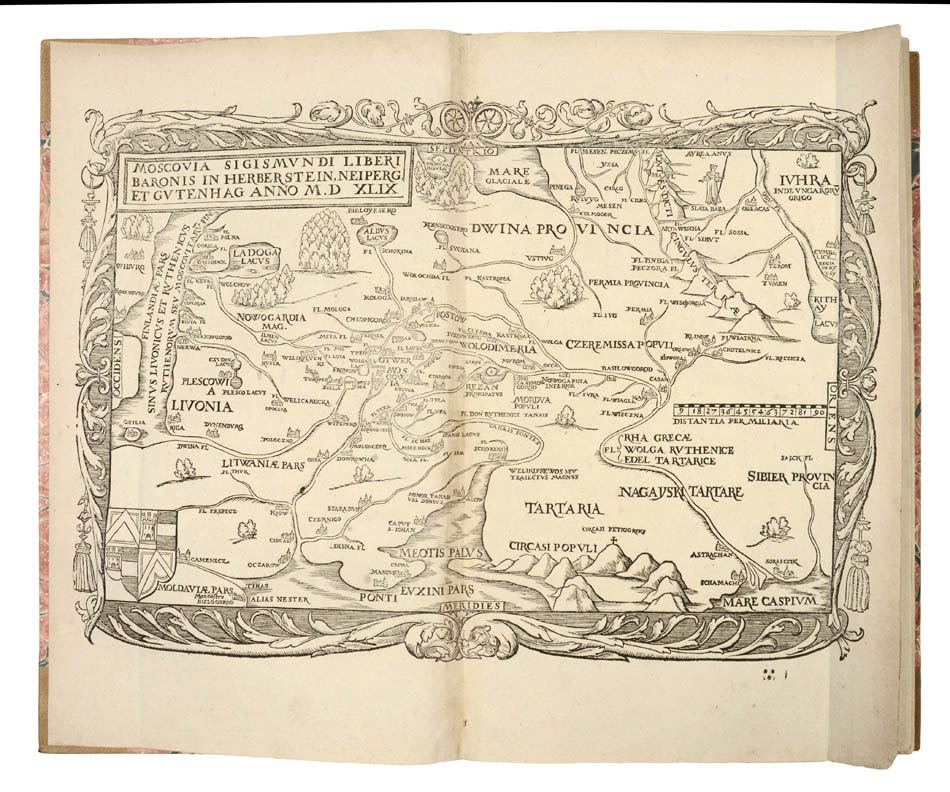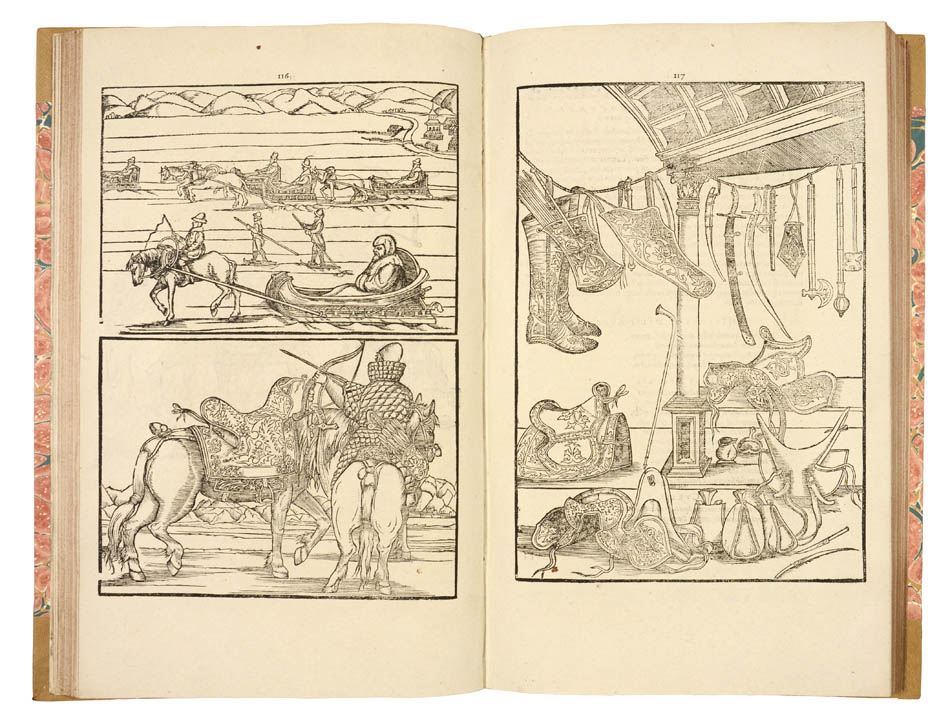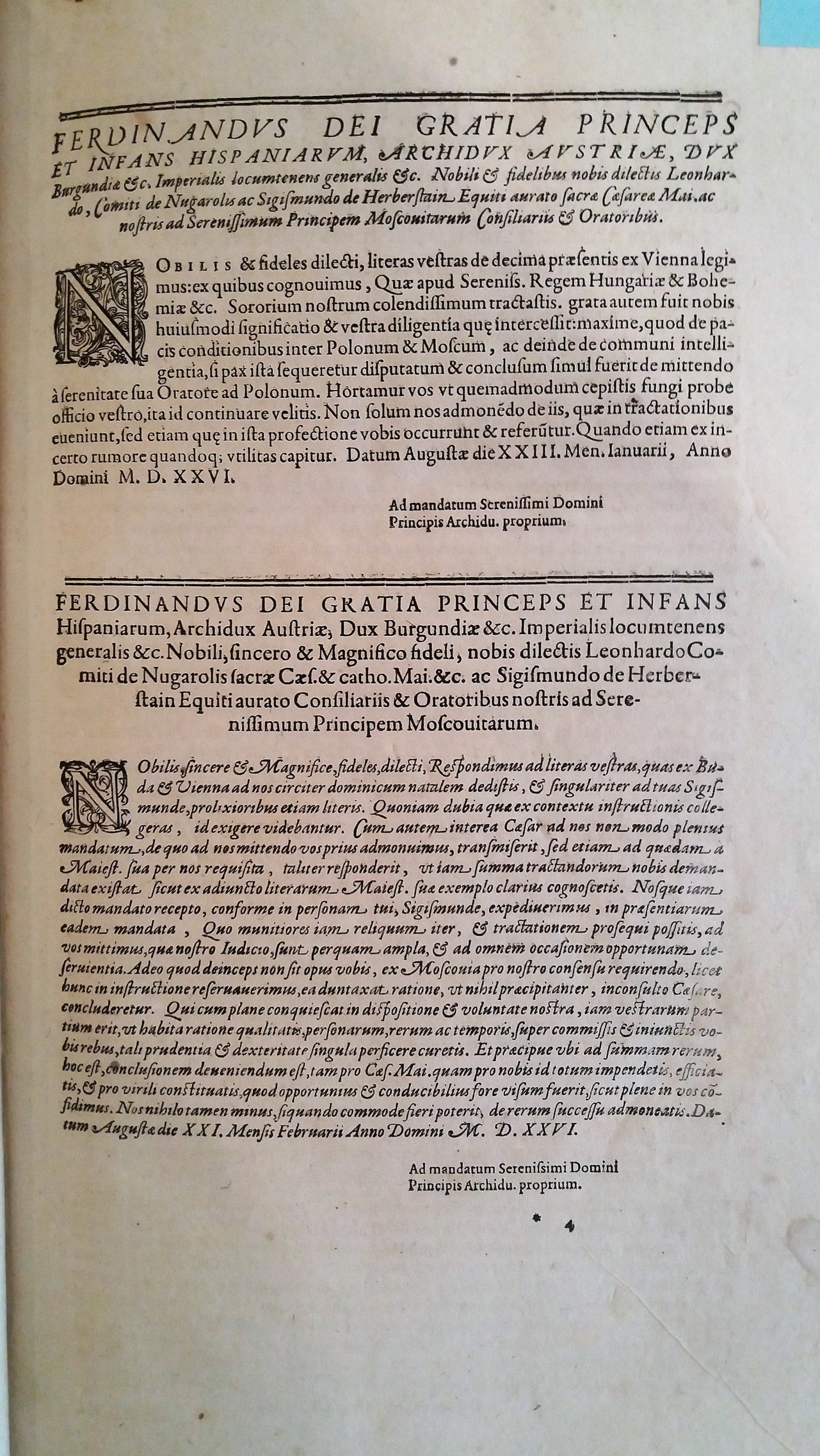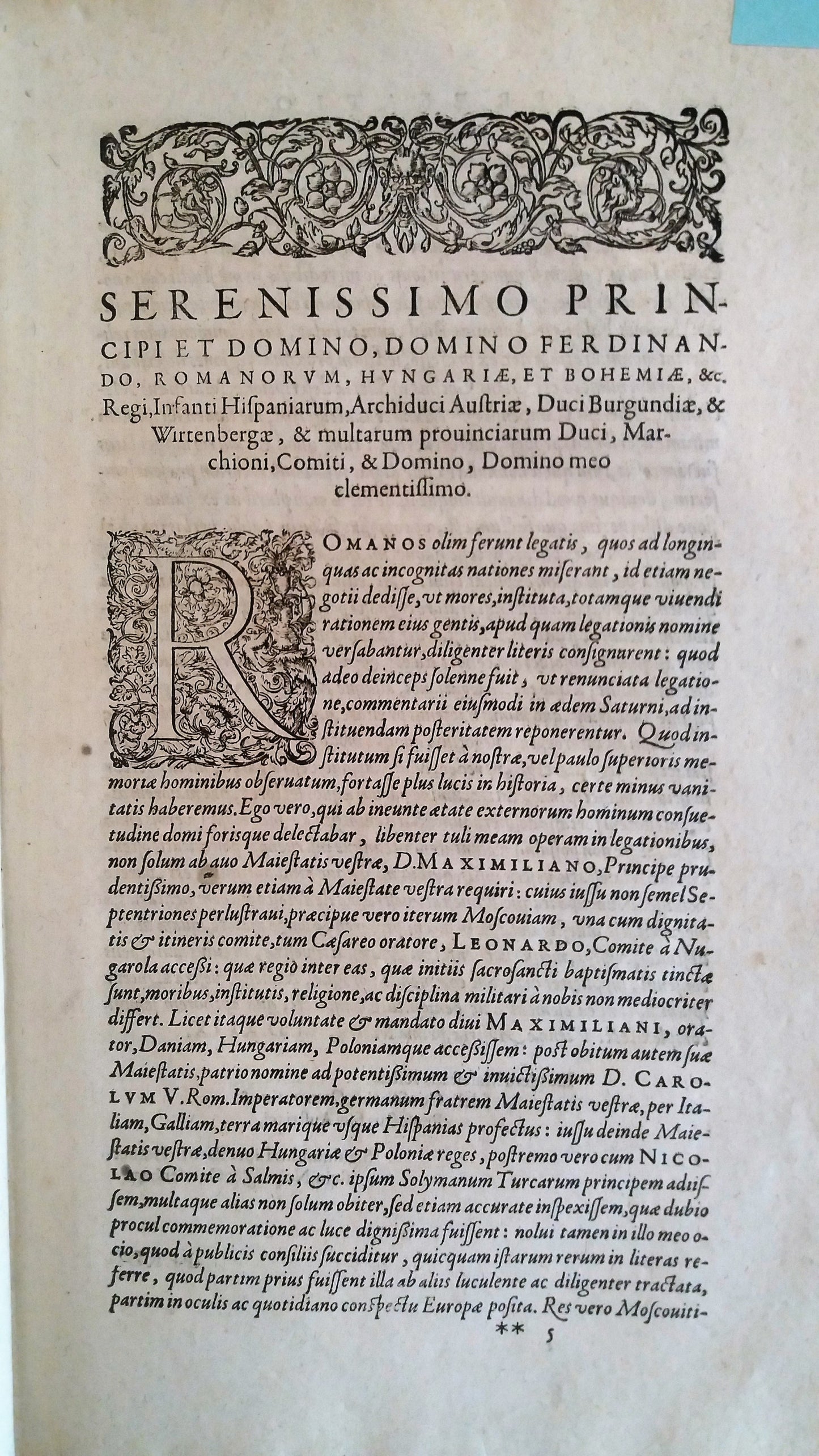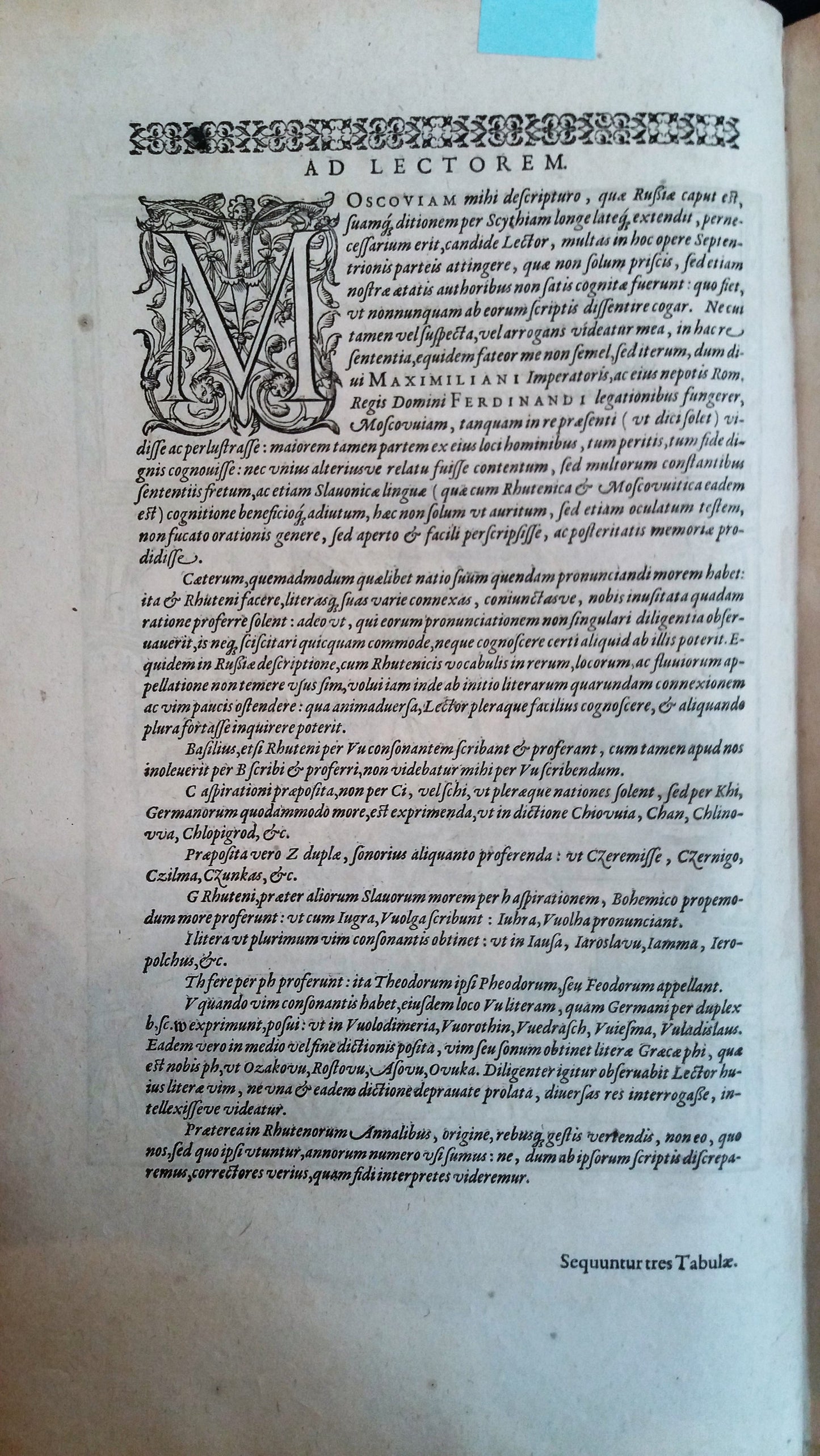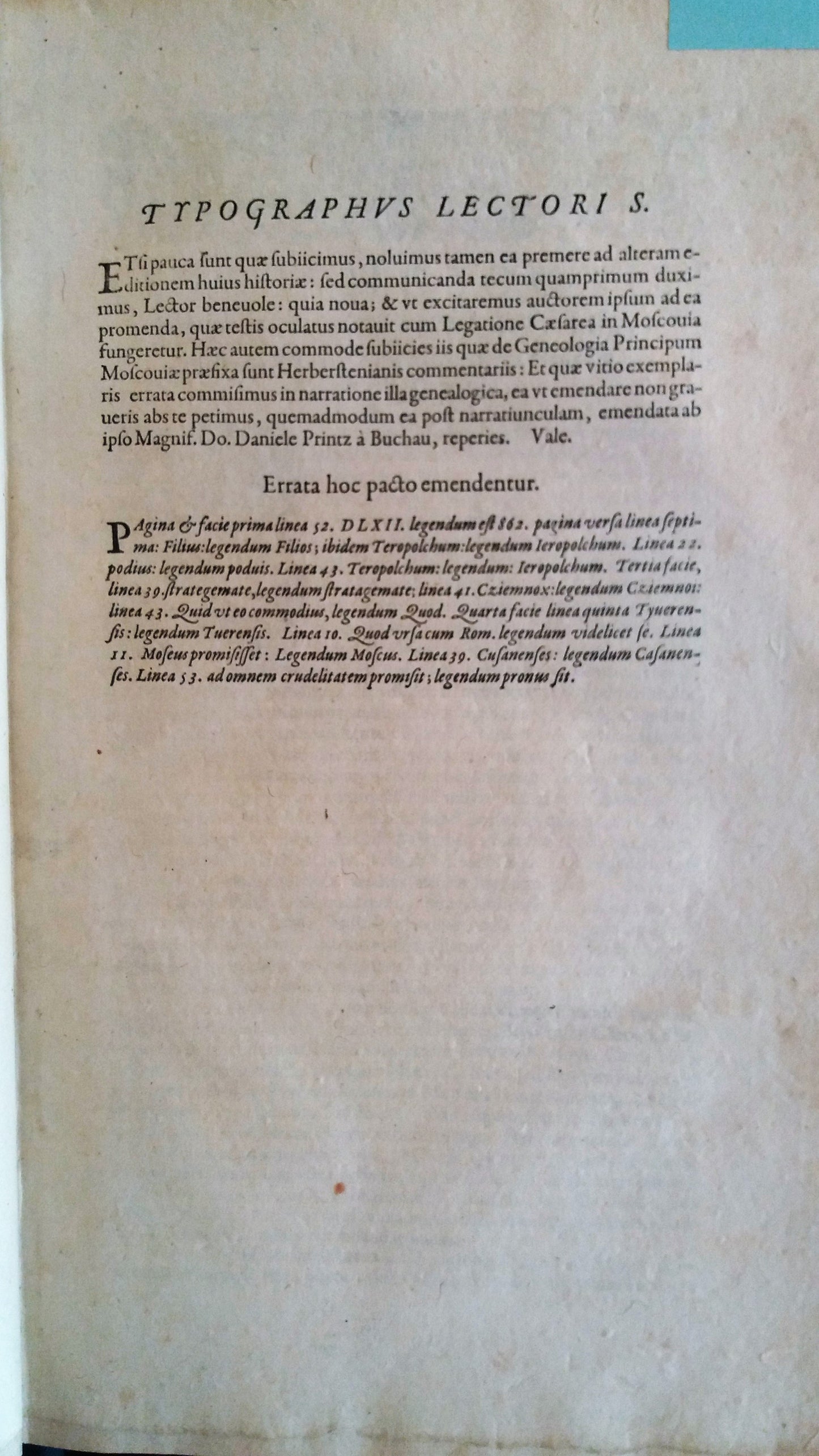Rerum Moscoviticarum auctores varii, unum in corpus nunc primum congesti.
Herberstein, Sigismund von.
Rerum Moscoviticarum auctores varii, unum in corpus nunc primum congesti.
Rerum Moscoviticarum auctores varii, unum in corpus nunc primum congesti.
Stock Code 93216
Andreaes Wechelius, Claudius Marnius & loan Aubrius, Frankfurt, 1600
The Chatsworth copy: from the library of Henry Cavendish, an important experimental and theoretical chemist and a discoverer of hydrogen.
Herberstein (1486-1566), an Austrian diplomat who was twice sent to Russia as the Habsburg ambassador to Moscow in 1517 and 1526, was the first foreign visitor to speak the language, read Cyrillic and record his experiences. The book was so warmly welcomed among the courts in Europe that "from its original publication in 1549, it became a veritable 'Baedeker' of travel narratives... [Herberstein] can be said to be almost singlehandedly responsible for the European image of Russia over several centuries" (Dr Rima Greenhill, Stanford University).
Herberstein's work was considered of such value that for many decades to come, travellers to Russia were strongly advised never to travel without it, as was the case with the English poet George Turberville. "In one of his letters from Russia during the mission of 1568-69, headed by Thomas Randolph, Turberville advised his friends never to venture to this barbarous land and, to stress his point, referred them to Herberstein's Rerum Moscoviticarum Commentarii: "To Sigismundus' book repair, who all the truth can tell." To the present day no serious study of Muscovy can be undertaken without reading Herberstein."
The 1600 edition is largely based on the 1556 Basel edition, which displayed significant changes in quality of content and of illustrations from the previous ones. It incorporates an important and useful illustration: three fine maps, along with elaborate woodcuts showing the Grand Duke (Tsar Vasily III), Muscovites, bisons, aurochs etc. The map of Moscow is the first printed plan of the city, probably drawn by Herberstein himself, who was not a cartographer but here reveals a commendable talent as a draughtsman. This woodcut became very famous, in particular through the use by Braun & Hogenberg.
This edition includes a number of other works describing the Grand Duchy of Moscow, including Paulo Giovio's De Legatione Basilii magni Principis Moschoviae ad Clementem VII; Tilmann Bredenbach's Historia belli Livonici; Paul Oderborn's scarce Ionannis Basilidis magni Moscoviae ducis vita; and Reinhold Heidenstein's De Bello Moschovitico commentarium.
Importantly, this copy comes from the library of Henry Cavendish FRS (1731–1810), a second cousin of the Fifth Duke of Devonshire. A prominent British scientist, he is known as the man who discovered hydrogen in 1766 and 'weighed the world' in 1798. His scientific experiments that he kept virtually secret until his death, explained a whole range of phenomena in the fields of electricity, chemistry and magnetism years before anyone else.
Henry's father, Lord Charles Cavendish, a Whig politician and experimental scientist in his own right, amassed a significant library during his lifetime. After his death in 1783 Henry moved these books to 11 Bedford Square, in Bloomsbury, and prodigiously added to the collection. The library had large sections dedicated to Astronomy, Mathematics and Natural Philosophy, as well as Travel and Maps. Upon his death, the collection was eventually passed to the Sixth Duke of Devonshire, William George Spencer Cavendish (1790–1858). The books were moved to the Oak Room at Chatsworth before being placed in the newly created library of the Sixth Duke, probably in the 1820s or early 1830s.
Folio (34.5 x 21.5 cm). Title, [26], 445, [56]pp. including 7 full-page woodcut illustrations and a folding genealogical table, with [3] leaves of plates (double-page woodcut map of Moscow and 2 double-page woodcut maps of Russia); title page a bit stained, with a small marginal repair. Recent half-calf retaining an old red-morocco label lettered in gilt.
VD 16, M 1038 (under Marne); Ulyaninskiy 3977.
Couldn't load pickup availability
About us
About us
Shapero Rare Books is an internationally renowned dealer in antiquarian & rare books and works on paper.
Our Bookshop and Gallery can be found in the heart of Mayfair at 94 New Bond Street, where most of our stock is available to view and on public display.
We exhibit at major international art fairs, including TEFAF (Maastricht and New York), Frieze Masters, Art Miami and Masterpiece London, as well as antiquarian & rare book fairs including New York, Paris, London, Los Angeles, San Francisco and Hong Kong.








